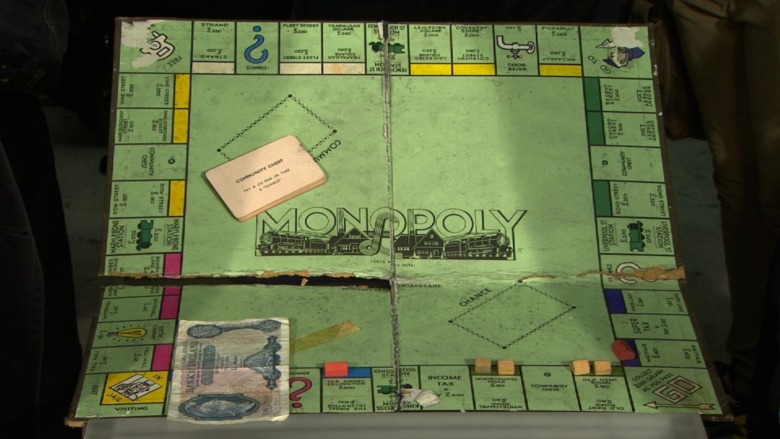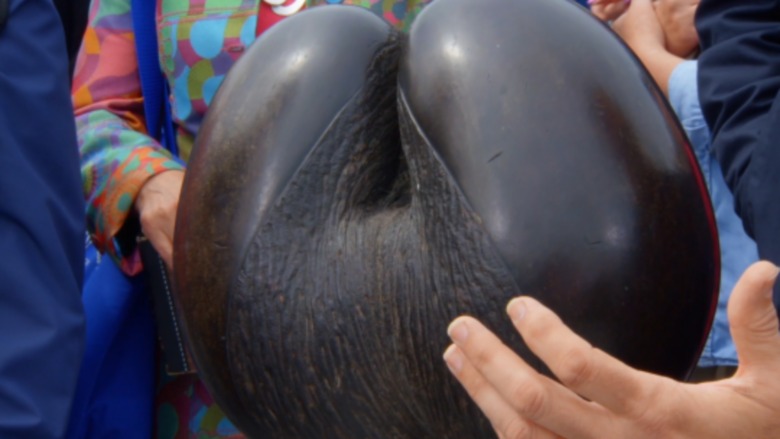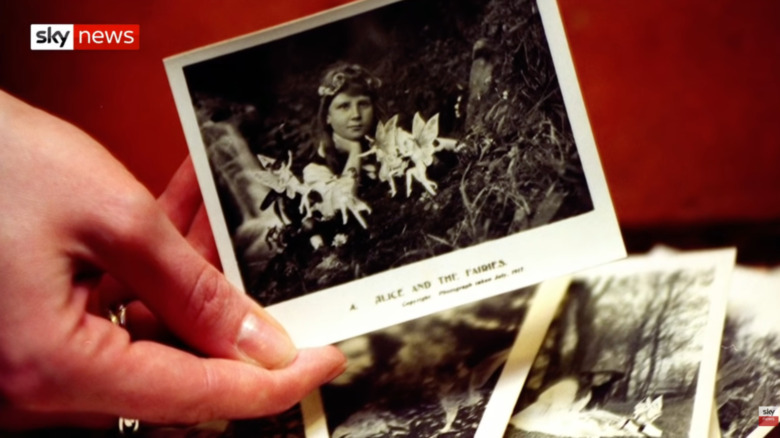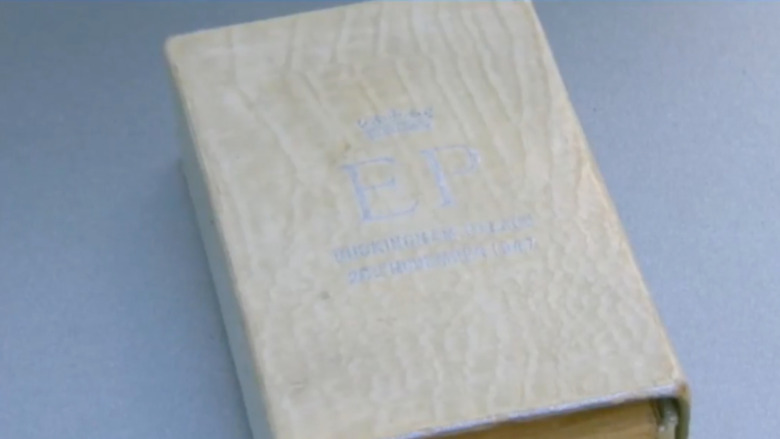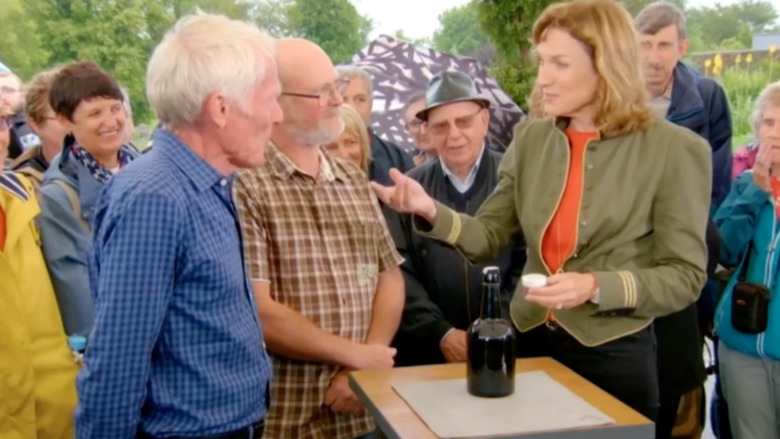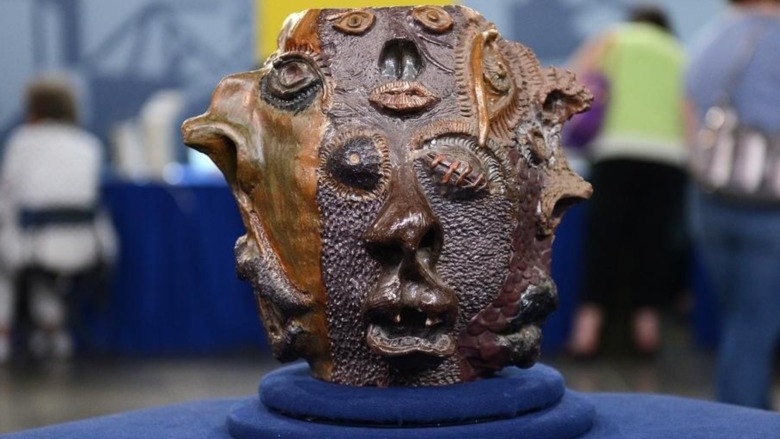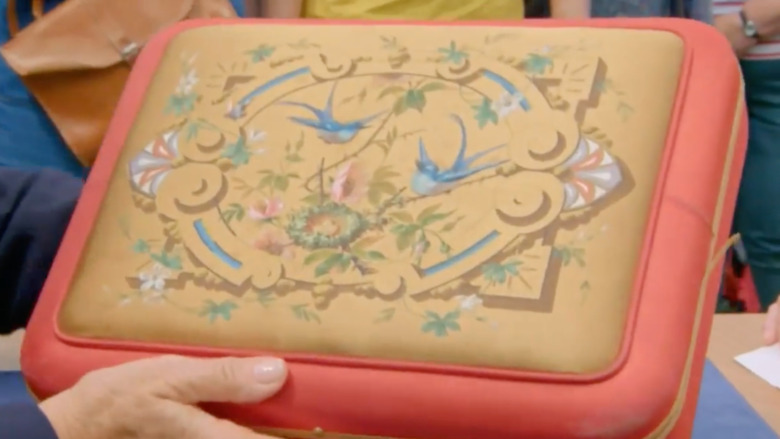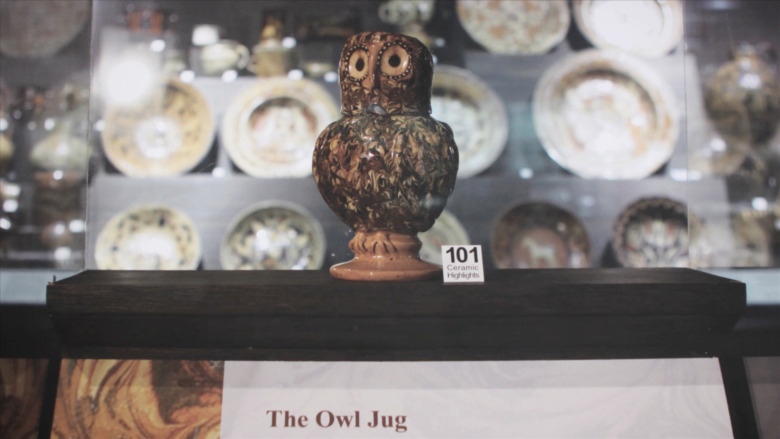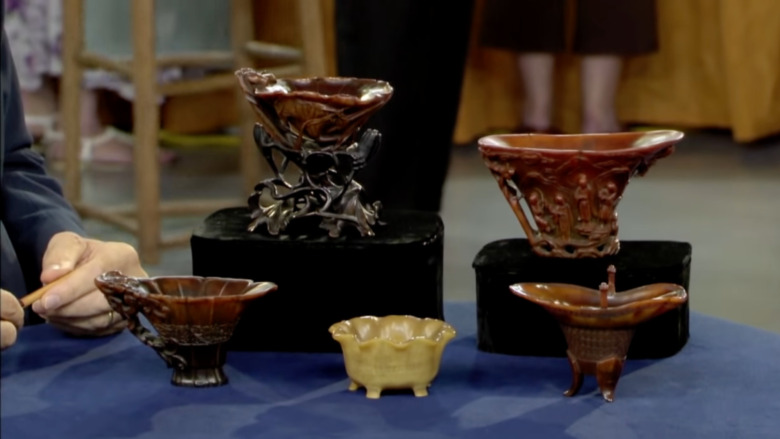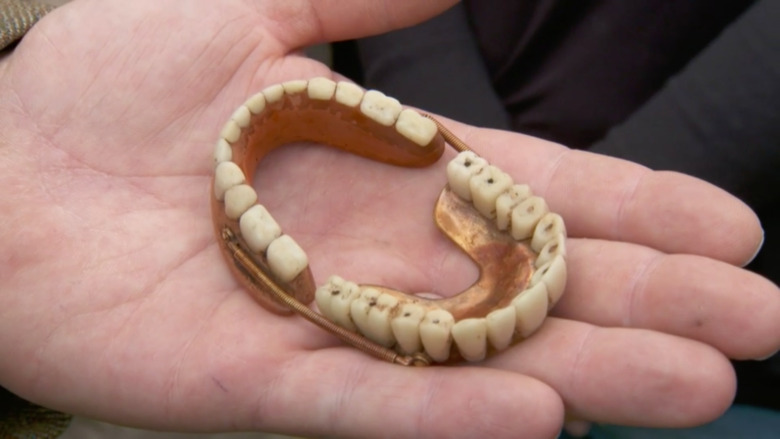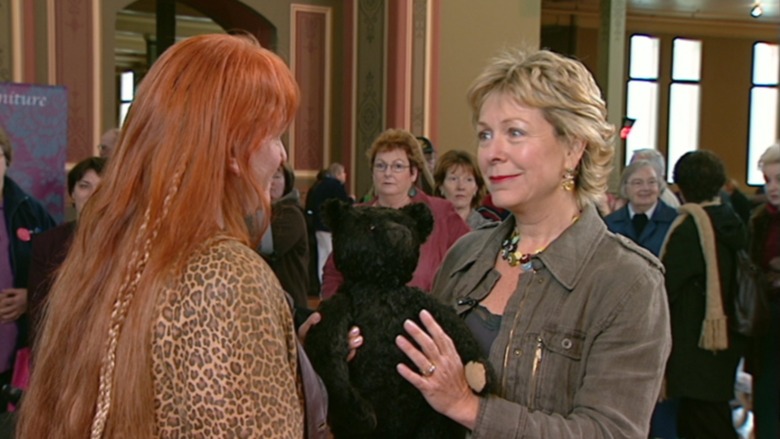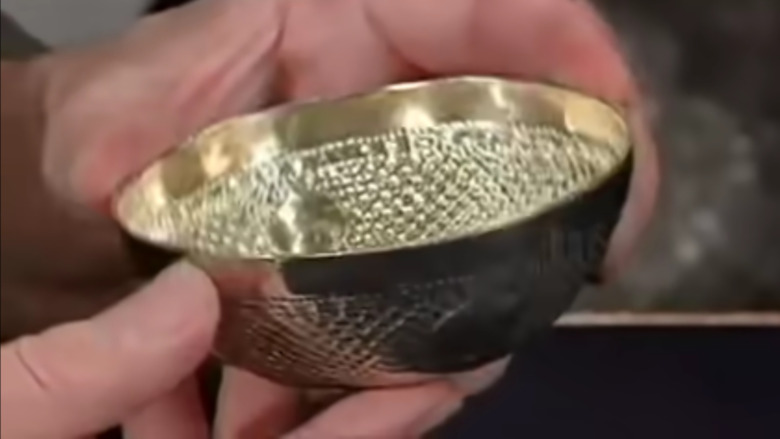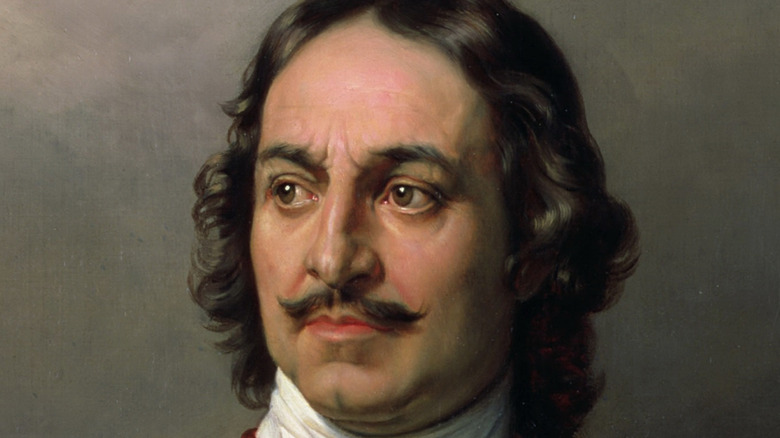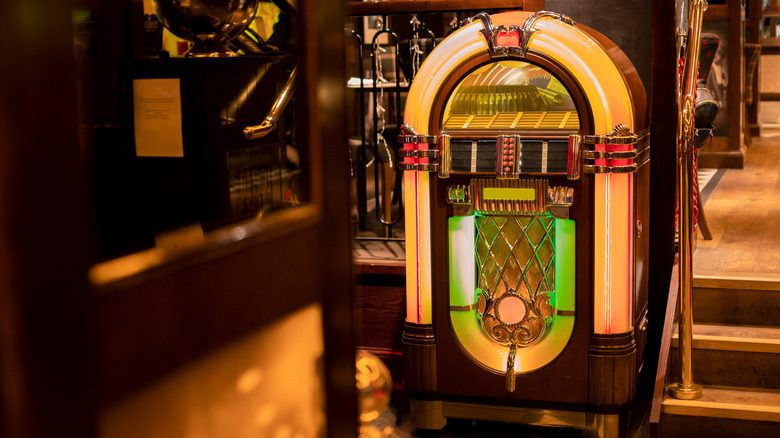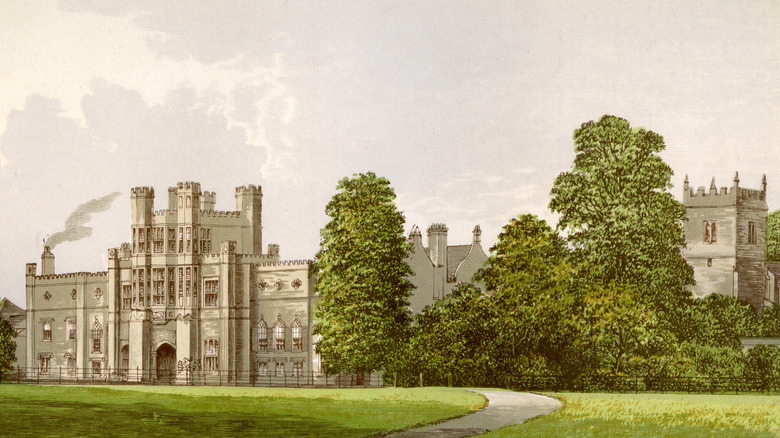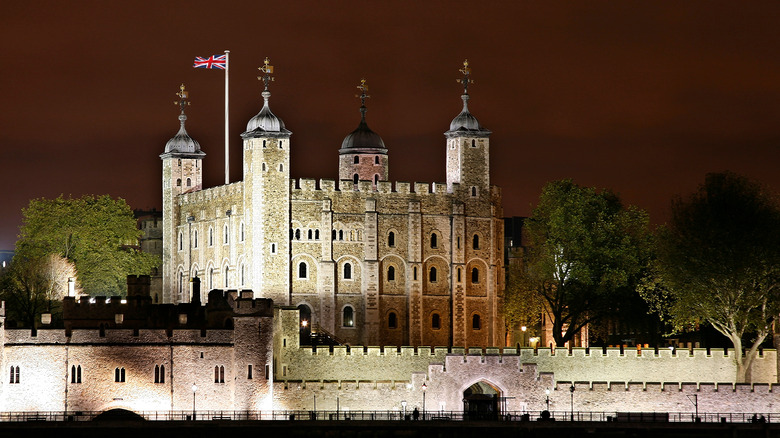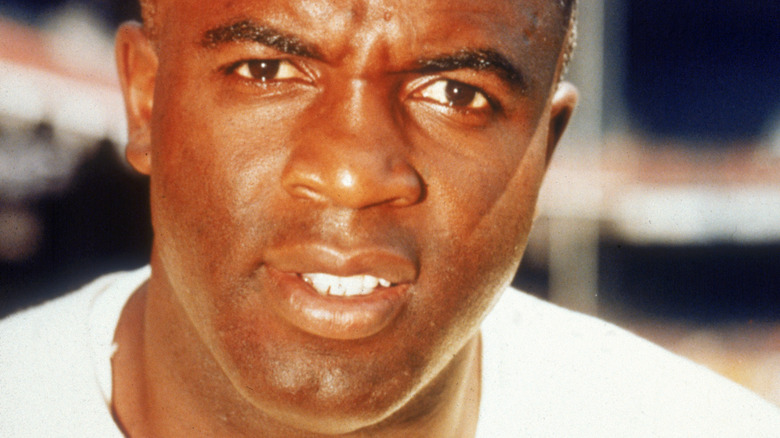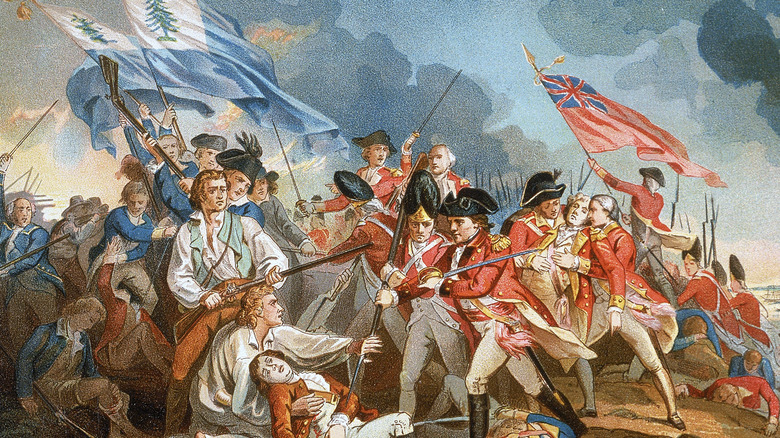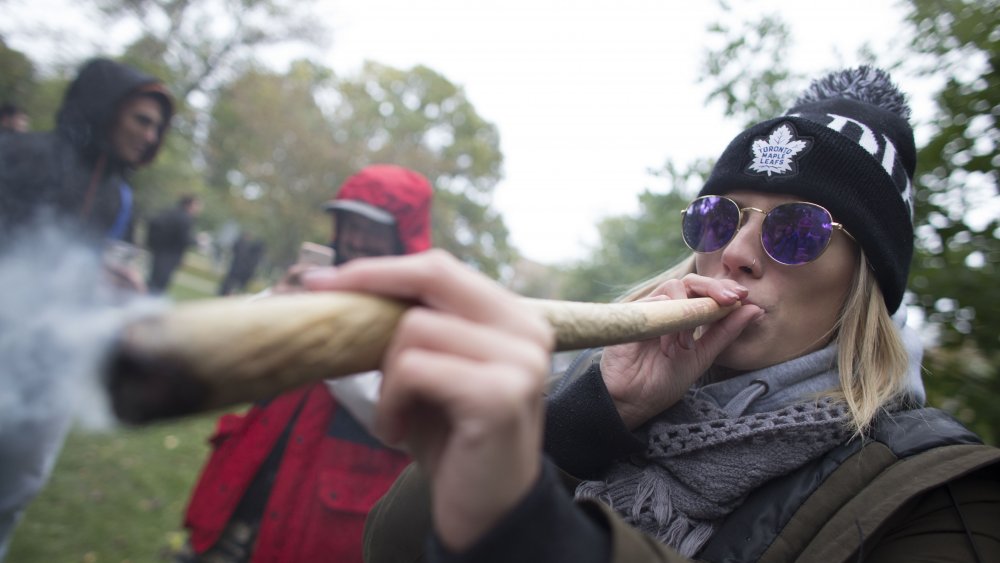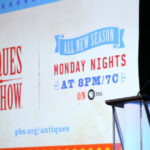
Most Bizarre Items Ever Brought Onto The Antiques Roadshow Lot
Premiering in 1979 in the UK, Antiques Roadshow has become a classic program, captivating viewers with golden nuggets of historical facts and planting seeds of curiosity over their own antique belongings. Being a series with hundreds of episodes, a majority of the items that show up have little shock factor and are mostly valued at less than $500, according to PBS’ Antiques Roadshowwebsite. After all, collectible record albums, old clocks and watches, and vintage paintings all fit the bill of “valuable antiques” quite well!
Once in a while, though, a guest will bring on an item that’s likely had the even most avid fans of the show scratching their heads. After more than 40 years on the air and multiple international spin-offs, it’s not surprising that the popular television series has seen its fair share of oddities. While some items were immediately jarring or confusing to see at first glance, others made waves for the shocking valuations they were given by the antiques experts. Ranging from a visually suggestive sea coconut to a nearly 70-year-old slice of cake from a royal wedding, here are some of the most bizarre items ever brought onto the Antiques Roadshow lot.
A criminal Monopoly board
One might wonder why anyone would have an old, ripped-up, dirty Monopoly board appear on Antiques Roadshow, but that is exactly what happened in 2013, when the curator of the Thames Valley Police Museum brought on a little piece of history. According to BBC One, a Monopoly board that was used as literal evidence in the Great Train Robbery trial was presented on the show and given a valuation.
The Great Train Robbery was an infamous crime that occurred in 1963 in Buckinghamshire, in which £2.5 million was stolen, a record heist at the time. Legend has it that, while hiding out in a farmhouse, the robbers played the board game, not with Monopoly money but with the real money that they stole! The Monopoly board was mistakenly left in the farmhouse after the robbers had escaped, giving authorities the chance to dust it for fingerprints and identify the prints of one of the men.
Fifty years later, the old board game made a television appearance on Roadshow and was given a relatively underwhelming valuation of £100-£200. As told by Radio Times, despite its historical significance, specialist George Archdale felt “it wrong for money to be made from a crime.”
Collectors apparently like big sea coconuts
Antiques Roadshow saw one of its most visually bizarre items in early May 2020 when a giant, varnished coconut showed up on the UK show, as covered by Metro. Called a coco de mer, the sea coconut is known for its huge size and suggestive shape, which humorously resembles a backside. The particular coconut that showed up on the Antiques Roadshow lot was “hand finished” and polished into a smooth surface on the edges, while the center retained its rough texture. Guesses to the use of the coco de mer were narrowed down to it just being a peculiar ornament. Antiques expert Marc Allum explained on the show, “I’m a collector, in the sense of a really old style collector. I love the idea of a cabinet of curiosities. One of the most essential items in one of those is a coco de mer.”
Scientifically called Lodoicea maldivica, according to Royal Botanic Gardens, Kew, the coconut, native to Seychelles, is the largest seed in the world and can weigh up to 25 kilograms. These huge nuts used to float out into the ocean and be discovered randomly around the world, with the source not known “until as late as 1768,” but today, they’re considered endangered due to over-harvesting.
Fairy photographs
According to the BBC, in 1917, a pair of cousins played a small prank on their family that would spiral into a world-famous hoax that fooled even Sherlock Holmes creator Sir Arthur Conan Doyle. Nine-year-old Frances Griffiths and 16-year-old Elsie Wright were playing in their yard in Cottingley that summer and claimed to their parents that there were fairies at the bottom of the stream. Armed with their camera, a few paper cut-outs, and hatpins, the girls set out on “proving” the existence of the fairies with some doctored photos.
Fast-forward three years, and what was once a silly family anecdote got national attention when Conan Doyle published the photos in a magazine in December 1920. Conan Doyle was deeply interested in spiritualism and saw the photos as proof of the existence of things beyond “normal reality.” The author subsequently gave the girls a new camera and asked them to take more photos, which were then published in 1921.
While most people were skeptical about the photos, it wasn’t until 1983 that Griffiths and Wright officially confessed that the photographs were fake. Twenty-five years later, Griffiths’ daughter and granddaughter showed up on Antiques Roadshow with the iconic photographs of the Cottingley fairies and Conan Doyle’s gifted camera, as told by Radio Times. Their value? A whole £25,000. Not bad for a silly childhood prank!
A decades-old slice of cake from a royal wedding
When an event is as big and historical as a royal wedding, you can’t blame those involved for taking home a keepsake to remember it by. While most of us would have likely chosen to keep something that didn’t have an expiration date, one guest showed up on the Antiques Roadshow lot in 2015 with a slice of the original cake from Queen Elizabeth II’s 1947 wedding, as reported by the Daily Express. While still in its original packaging, the extremely delicate and decaying slice was nearly 70 years old at that point, with “mummified raisins” and the original decorations on the cake also included in the box.
The guest who brought the slice explained that her granddad had been a part of the Guard of Honor during the wedding, with her “staunch royalist” nan refusing to eat the piece, instead opting to show it off to visitors and friends. Nearly 70 years later and presented on the Antiques Roadshow lot, the royal wedding cake slice was valued for a whopping £1,000.
Mystery liquid turns out to be urine
In 2016, a glass bottle filled with mysterious liquid that had been buried under a house in Cornwall was brought onto the Antiques Roadshow lot, much to the excitement of glass specialist Andy McConnell, as covered by the Daily Express. Estimating that the bottle was from the 1800s, McConnell was particularly interested in the liquid contents, declaring that “bottles with the liquid still preserved inside are much rarer.” In what would prove to be a regretfully nasty decision, the specialist carefully extracted the liquid, which ended up being very brown in color, with a syringe and gave it a taste.
At the time, McConnell’s reckoned that it was port or red wine, with an added guess that it could also be “full of rusty old nails.” Three years later, after the bottle had been sent to Loughborough University for analysis, McConnell and the mystery liquid were reunited as Antiques Roadshow host Fiona Bruce revealed the actual contents of the 200-year-old bottle.
McConnell was accurate in his guess regarding nails: There were brass pins in the liquid … which ended up being urine. Topping off the disgusting drink was “a tiny bit of alcohol, a human hair, and an ostracod.” A far cry from port or red wine, it turned out that the cocktail was a “witches’ brew, designed to ward off witchcraft and hexes.”
The “Grotesque Face Jug”
When antiques broker Alvin Barr purchased a peculiar jug for $300, he had a feeling he overpaid. Barr had picked up the jug, which was covered in “a layer of straw and dirt and chicken poop,” in a barn during an estate sale but recalled that there was something about the jug that just spoke to him, as reported by The Washington Post. When he showed up on Antiques Roadshow with the unique piece, now called the “Grotesque Face Jug,” he was rendered speechless at its $30,000 to $50,000 valuation.
But while most Roadshow stories end there, the story of the Grotesque Face Jug has a second plot twist. A few months after the episode aired, the program got a call from someone who knew the true origins of the jug. What the appraiser had thought to be a “unique art piece from the Mid-Atlantic coast of 19th-century America,” was actually a school project piece from an Oregon high-schooler in the 1970s. Betsy Soule made the Grotesque Face Jug for her ceramics class with no knowledge of the art style that the appraiser thought it was a part of. The piece was then valued to be around $3,000 to $5,000. Barr, though, wasn’t disappointed in the slightest and even offered to buy the rest of Soule’s pieces, saying, “I hated it when it was $30,000 to $50,000, because who wants $30,000 to $50,000 lying around their house? Now, it’s on my table, and I love it.”
A century-old chocolate box fit for a queen
It’s always a nice surprise when something that you’ve acquired for just a few pounds ends up being worth £500 in value. According to the Daily Express, the large, detailed chocolate box that appeared on Antiques Roadshow in 2019 was won by the guest and her mother during a fundraiser in the 1970s. The entrance fee to the event was £1, and the raffle ticket was £5, “which back in ’76 was quite a lot of money.”
Turns out, the chocolate box had actually belonged to Queen Victoria in the 1870s. She’d given it to the wife of the Master of the Household once the box was emptied out, and it had stayed in that family until it showed up again at a fundraising raffle about 100 years later! While there wasn’t any century-old chocolate included, antiques expert Hilary Ray estimated that, with the surged interest in Queen Victoria and the royal family, the intricate chocolate box could fetch at least £500 if it were to go to auction. The uptick shocked the owner, who assumed it wouldn’t be worth more than £50, but her love for the box outmatched any desire for an extra £500, and she decided to keep it.
Ozzy (or Ozzie) the Owl
One of the most memorable items to show up on BBC’s Antiques Roadshow was a seemingly insignificant ceramic owl jug that ended up being worth over £20,000! According to the Daily Mail, the owner of the owl (who had no idea how it had come into the family) casually traveled with the valuable piece by bus to get to the site of the show but was accompanied by two policeman on her way home with the famous owl in a taxi.
Later named Ozzy (or Ozzie) the Owl, the piece was originally made for drinking, with the hollow body meant to be used as a jug and the removable head as a cup. Reviewed by pottery and porcelain expert Henry Sandon, the owl brought much excitement due to its rare status as a Staffordshire slipware piece, as told by BBC One. The piece would end up being one of the most well-known reviewed during his career, and the expert even got an Ozzy the Owl cake made for his 80th birthday!
During the show, Sandon gave Ozzy the Owl a valuation of £20,000, and then, the rare pottery piece ended up being sold to The Potteries Museum & Art Gallery for £22,000. In addition to allowing the meaningful art piece to be displayed to the public, the sale also did some good to the world, with the owner using that money to “support five orphans from around the world,” according to Stoke-on-Trent Museums.
Chinese rhino cups
As archived by PBS, one of the most valuable collections to appear on Antiques Roadshow stemmed from one Tulsa man’s curiosity during a trip to Bath, England. Back in the early 1970s, the guest had spent most of his trip budget on a $500 rhinoceros horn cup that he came across in an antique shop. Such cups were made in China for ceremonial presentation purposes. With his interest piqued, collecting the antique cups became a personal passion. A few decades and over $5,000 later, his collection of Chinese rhinoceros libation cups from the late 17th to early 18th century received a shocking valuation on the show at between $1 and $1.5 million.
Part of the reason for its high value was due to the rarity of rhinoceros horn because of the rhino’s current status as an endangered species. Additionally, the Chinese art market was also booming at the time “because there are so many people in China trying to buy back things that mean something to them.” And so, before he knew it, the man who impulsively bought a rhino horn cup on a trip became the owner of a rare million-dollar collection.
Fake teeth from the 19th century
As covered by the Daily Express, in expert John Foster’s ten years of being on Antiques Roadshow, there was one thing that he had always wanted to see: false teeth. The set that he got his hands on in 2017 was of a particularly rare variety. Likely belonging to an extremely wealthy toothless owner, the false set was made of porcelain teeth and a gold plate, springs, and pins. The true origins of the fake teeth were a bit of a mystery, with the guest who brought them only knowing that his father had found them randomly at the bottom of a box of junk he had purchased at a trunk fair. Taking a quick look, Foster was only about five years early when he guessed that the set was from around 1845 to 1855. (The actual range turned out to be 1850-1860.)
Considering how rare it was for teeth to be made of porcelain, this set of false teeth was valued between £2,000 and £2,500! Whether someone would actually have a use for teeth that are over 150 years old is questionable, but that’s definitely not a bad deal for something someone randomly bought for a few pounds at a car boot fair.
A Teddy Bear with Titanic-sized significance
As common as teddy bears are these days, it’s hard to imagine any old stuffed bear going for hundreds of thousands of dollars, but that’s exactly what a black mohair bear made by the famous German toy company Steiff was valued at on Antiques Roadshow in 2005, according to The Examiner. The bizarrely high price was due to the rarity and significance of the bear, which was produced in the 1910s in honor of the victims of the Titanic sinking and called the Titanic Mourning Bear. According to Fred-i-Bear, only 655 mourning bears were made with long mohair between the years 1912 and 1919, and only 1,608 mourning bears made of short pile plush were produced in 1912.
A well-known and rare collectible in the toy world, the bear’s owner, Sonia Beggs, paid $40,000 AUD for it before learning of its $200,000 value on Antiques Roadshow in 2005. But even that mind-blowing price isn’t the maximum it could go for. According to The Age, “similar Titanic bears had reached up to about $500,000 at auction, depending on their condition.” While the memories with your childhood stuffed animal are surely priceless, it’s crazy to think that a simple stuffed bear could go for half a million dollars!
Some hoarded silver stuffed in shoeboxes
When Richard Hobbs showed up to Antiques Roadshow in 1993 with a bag of random silver items, he wasn’t prepared in the slightest for what he would learn. As reported by Radio Times, he and his family had been struggling financially but would soon find their lives changed because of his single decision to bring in the collection of silver objects that his father had been “stashing under the bed in shoeboxes.”
The family’s hoard of silver would end up being one of Antiques Roadshow‘s most iconic discoveries. Recalling the day, silver specialist Ian Pickford remembers how he brightened up like a kid on Christmas Day as he studied the silver and dropped the shocking fact that one of the pieces was likely a wine-tasting cup from 1607 during the reign of King James I. A stag-head cup was also part of the set, and all in all, the collection was valued at a whopping £250,000, with Hobbs and his mother later selling it for a life-changing £350,000.

The Crocodile Moment That Had Steve Irwin Fans Seeing Red
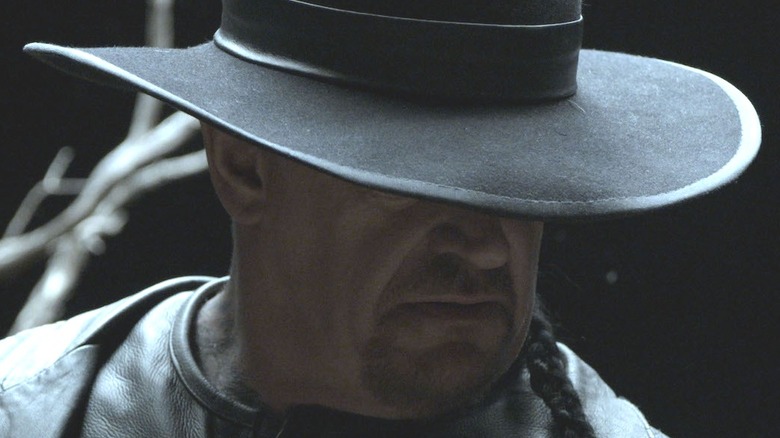
This Is The Best And The Worst Path You Can Choose In Netflix's Escape The Undertaker

Disturbing Details Discovered In Cory Monteith's Autopsy

These Were Bobby Eaton's Best Wrestling Matches Of His Career

The Tragic Murder Of Dylan McDermott's Mother

The Untold Truth Of The Everly Brothers
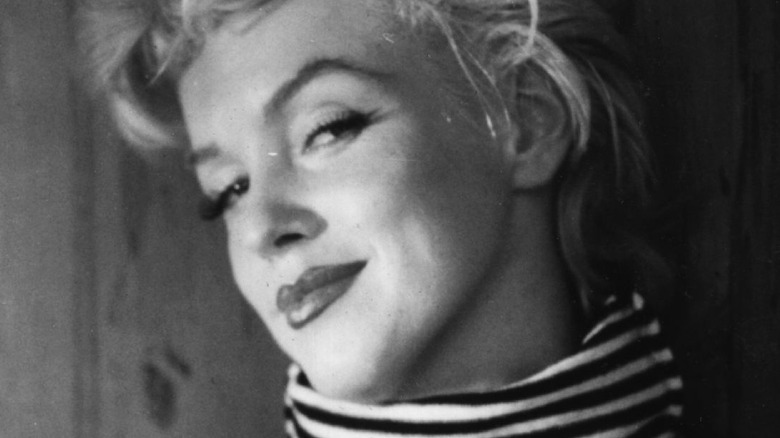
Marilyn Monroe's Eerie Letter From Inside A Psychiatric Hospital

The Worst Music Biopic, According To 30% Of People
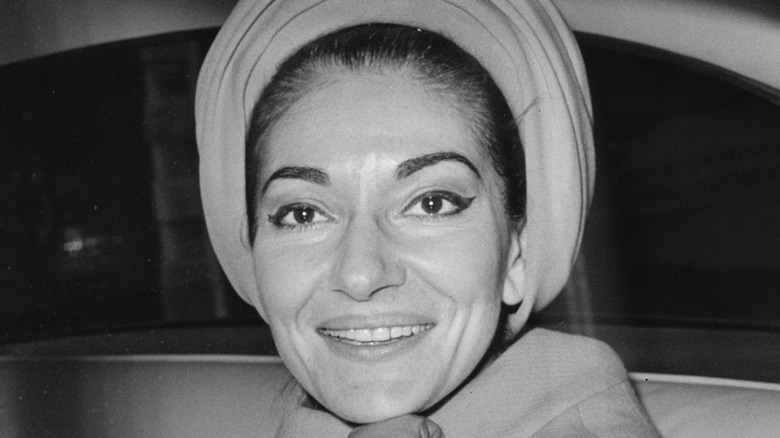
The Tragic True Story Of Maria Callas
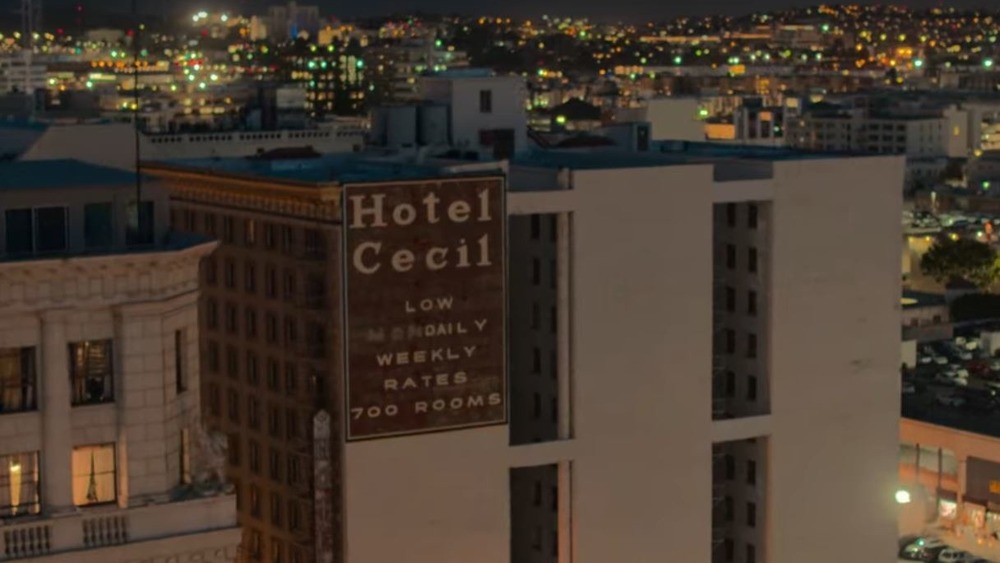
Expert Shares The Dirty Truth About The Cecil Hotel Drinking Water
